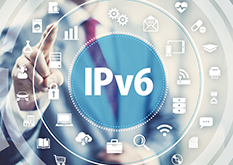Course: Introduction to Data Communications
Course: Intro to Data Communications
Course Price: $39
Theater Mode
Course Brief
Course Price: $39
Take This Course
Wishlist
 Course Author
Data Communications & IP Technologies
Course Author
Data Communications & IP Technologies
124 Minutes
124
12 Lessons
12
Lifetime Access
Lifetime
Course Summary
The Introduction to Data Communications Course presents the basic theory of operation of data communications networks, starting with OSI-RM and the data structure, Ethernet and LANs, LAN switching and WAN. The course provides the student with general knowledge of the architecture, hardware components, software configuration, and structure of data communications networks.
Lessons
0%
Syllabus
Description
The Introduction to Data Communications Course presents the
basic theory of operation of data communications networks, starting with OSI-RM
and the data structure, Ethernet and LANs, LAN switching and WAN. The course
provides the student with general knowledge of the architecture, hardware
components, software configuration, and structure of data communications
networks.
Course Modules
The course includes the following modules:
The course includes the following modules:
-
1. Introduction to Data Networks and Network Applications
In this module we learn about the basics of data networks, the behavior of network applications, and their requirements from the data network. -
2. The OSI Reference Model and Networks Data Structure
In this module we learn about the OSI reference model and the structure of data that is transferred through the network. -
3. Introduction to LANs & the Ethernet Protocol
In this module we talk about Local Area Networks and the components that implement these networks, and we provide a brief description of the technology and how it started and developed over the years -
4. LANs and the Ethernet Protocol
In this module we learn about the Ethernet that implements modern LANs: the Ethernet frame structure, CSMA/CD and the collision mechanism, and cable types -
5. Ethernet Types and Speeds
In this module we talk about Ethernet types and speeds, from the old 10/100Mbps through 1/10Gbps and to the modern 40/100Gbps Ethernet for data centers and carrier networks -
6. Introduction to LAN Switching
In this module we introduce the principles of the LAN switching operation, along with speed and duplex operation of LAN switch ports -
7. VLANs, VLAN Tagging & Prioritization
In this module we learn about Virtual LANs and how they work, the VLAN tagging principle and implementation, and prioritization in local area networks -
8. STP & RSTP
In this module we learn about the Spanning Tree Protocols - STP, and Rapid STP, how they prevent loops in the network, their principles of operation, and the parameters they use in the process of network construction -
9. WAN & the Public Network
In this module we learn about the structure of the public network: the Service Provider network and the types of services it provides -
10. WAN Traditional Services
In this module we learn about the traditional WAN services: switching, transmission, and access technologies, along with ATM and SDH/SONet services -
11. WAN Advanced Services
In this module we learn about the new public network structure, the basics of MPLS-based WAN services, and the basics of Carrier-Ethernet based WAN services -
12. Introduction to TCP/IP
In this module we learn about the basics of the TCP/IP protocol stack with its protocols, and how it all fits together to provide end-to-end communications throughout the networks




